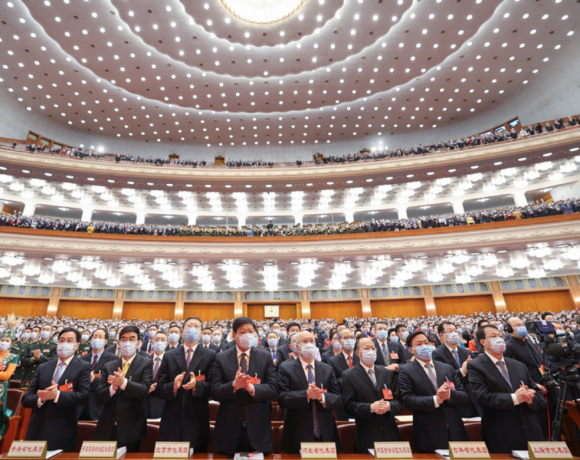- The share of manufacturing GDP in China has come down from 32% to 26% over the last decade and might fall even further. This shift away from low-cost manufacturing in China means producers of such products need to find a new home. Several countries in South and South-East Asia were eager to attract them. However, the biggest beneficiaries are Vietnam and Bangladesh.
- On the other side of the spectrum, the economies to keep an eye on are those of South Korea and Taiwan. Both have a comparative advantage in high technology and play critical roles in the GVC in several sectors, from computers to cars.
- The Indian government had announced a set of policies to boost manufacturing under the “Make in India” and “Atmanirbhar Bharat” policies. There was also hope that India will benefit from firms relocating from China.
The fog of uncertainty that has engulfed us over the last two years lingers on. It is difficult, indeed risky, to peer through that shroud and hazard a guess about how the future might shape up. But one thing is for sure; it will be different from what it was in the past. This is particularly true if we try to think about the economic future of Asian countries.
Even before the pandemic hit some changes were afoot in Asia. Yet, broadly speaking, the order of things had remained the same over the last couple of decades. China was still the manufacturing powerhouse, which in turn powered their growth. The growth rate of GDP, though, was slowing down – it came down from about 10% in 2010 to about 6% in 2019, just before the pandemic hit. In the background, the accelerated demographic transition brought about by the one-child policy meant that even its seemingly indefatigable supply of cheap labour dwindled. As a result, low-cost-low-quality manufacturing, which had propelled China earlier, is increasingly becoming unviable for them. The share of manufacturing GDP in China has come down from 32% to 26% over the last decade and might fall even further.
This has implications for China as well as the rest of the world. Given the population dynamics, China has to and is trying to move up the technology ladder. In fact, it has made great strides in certain areas, like battery manufacturing. By some estimates, China produced about 77% of all Lithium-ion batteries produced in the world in 2020. Going forward, this trend is likely to continue, and China will move away from mass-producing low-cost products into more high technology and capital-intensive production. However, this might accentuate inequality within the country with capital owners and high skilled workers gaining and unskilled workers losing out. It will be interesting to see how this growth strategy can be balanced with the new policy of “Common Prosperity” announced by President Xi. The details of the new policy are still unfolding and we will have to keep an eye on how these dynamics play out.
This shift away from low-cost manufacturing in China means producers of such products need to find a new home. Several countries in South and South-East Asia are eager to attract them. However, the biggest beneficiaries are Vietnam and Bangladesh.
Vietnam has long been working on the “China plus one” policy and has been hugely successful in attracting foreign investment. Net inflows in FDI in Vietnam increased exponentially from around USD 1.3 billion in 2000 to USD 16.1 billion in 2019 (in current USD terms). This has led to an increase in manufacturing value added in Vietnam from USD 8.6 billion in 2000 to USD 45.1 billion in 2020 (in constant 2015 USD terms). It is also reflected in the fact that for Vietnam, Global value Chain (GVC) related trade, defined as the value added that has crossed at least two national borders, is close to 60% of gross trade in 2020.
Bangladesh has also seen a rapid rise in manufacturing value added – it increased from USD 9.9 billion in 2000 to USD 53.5 billion in 2020 (in constant 2015 USD terms). This has translated into an impressive increase in the GDP per capita of both countries. In 2000, GDP per capita in constant 2015 USD terms were USD 957.0 and USD 653.8 for Vietnam and Bangladesh respectively. In 2020, they are USD 2665.8 and USD 1625.7 respectively. Given the type of manufacturing these two countries are engaged in, it is likely they will continue to benefit from the restructuring in China and the realignment in the supply chain that is taking place following the pandemic.
On the other side of the spectrum, the economies to keep an eye on are those of South Korea and Taiwan. Both have a comparative advantage in high technology and play critical roles in the GVC in several sectors, from computers to cars. Now, with China trying to make room for itself in that space, this will have implications for these two economies. Moreover, the geopolitics, including China-USA relationships will likely have a big bearing on both Taiwan and South Korea. The geopolitics can also engulf the Japanese economy, which is now highly dependent on China. Japan’s largest export destination in 2020 was China, with it receiving 22.9 per cent of Japan’s total exports. So, any worsening of relationship between the two countries can have an adverse impact on the Japanese economy.
What about India, the other big economy in Asia? The GDP growth rate for India has slowed down over the last few years, even prior to the pandemic. Unemployment also remains relatively high. The impact of the Covid pandemic has also been quite severe on the Indian economy. To tackle that, the government had announced a set of policies to boost manufacturing under the “Make in India” and “Atmanirbhar Bharat” policies. There was also hope that India will benefit from firms relocating from China.
However, the reality is quite different. Manufacturing value added as a percentage of GDP has fallen from 17 percent in 2010 to 13 percent in 2020. If one looks closely at the Indian economy, it is not surprising that manufacturing has not really taken off. It is true that India has a large base of working-age population, so potentially there is a large pool of workers to power up manufacturing. Nevertheless, there are several issues.
The first is that the cost of doing business in India still remains quite high and that easily offsets the low wage costs. Also, while the population size is quite large, the participation rate in the labour force by women is low, limiting the supply of workers. Thus, India is not that attractive a destination for low-cost manufacturing firms. Then, the other big challenge is that the skill level of the workforce in India is dismally low. The average number of years of schooling in India is only about 6.5 years. That means high tech manufacturing cannot take off on a large scale. India urgently needs to work on education and skilling. Unfortunately, the pandemic has dealt a huge blow to those areas, particularly school education, and that can have long-term ramifications unless a concerted effort is made.
So, where does India go from here? How does it get back to a high growth path? In the short term, it will have to rely on the services sector to drive growth. Agriculture and, to a certain extent, construction will continue to absorb a large section of the unskilled workforce. To support a large number of people dependent on agriculture, it is necessary to increase productivity in agriculture, but that is not going to be easy. The good news is that the government has announced several large infrastructure projects – this could potentially provide employment opportunities to a large number of unskilled workers.
Much depends on the services sector. With digitisation picking up pace across the world, India can truly become the global back office. In fact, India’s competency in services can be leveraged further to help it become a powerhouse in manufacturing services. With better connectivity and the adoption of 5G and IOT, it is possible to globally support design, development, customisation, testing, analysis, user support and experience, and such from India. Admittedly, this will not employ the large quantity of unskilled workers that low-cost manufacturing could have, but in the short term, it can help support many high touch services, including transport, tourism, and personal services that can potentially employ relatively low skilled workers. It has the potential to eventually pave the path to large-scale high-tech manufacturing in India.
A lot of change is afoot in Asia, and the next year will give us a sense of where Asia is headed.






NO COMMENT